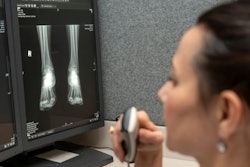The Spanish Society of Medical Radiology (SERAM) observed World Prostate Cancer Day on 11 June by highlighting the need for men suspected of prostate cancer to undergo a prostate MRI exam.
A prostate MRI allows the identification and localization of lesions suspicious for prostate cancer and, if negative, could avoid the need for invasive biopsies, SERAM said.
“The diagnostic capacity of prostate MRI makes it possible to avoid performing prostate biopsy in patients with low clinical suspicion of prostate cancer if they do not present suspicious lesions on MRI,” said Dr. Rafael Salvador, a prostate radiologist at the Hospital Clinic of Barcelona, in a statement from the society.
Prostate cancer is the most common tumor in men, with more than 30,000 cases diagnosed each year according to the Spanish Network of Cancer Registries. It is not the most common cause of cancer death in men, but it is estimated that there are 6,000 deaths annually from this disease, SERAM noted.
Radiology plays a pivotal role in the diagnosis of prostate cancer, but it is also important in the control and monitoring of the disease, Salvador added.
For instance, if patients ultimately require surgical treatment or radiotherapy, during follow-up, MRI also allows the diagnosis of possible local recurrence of the disease, while CT is necessary to stage patients with a recent diagnosis and to select the best treatment, he said.




















